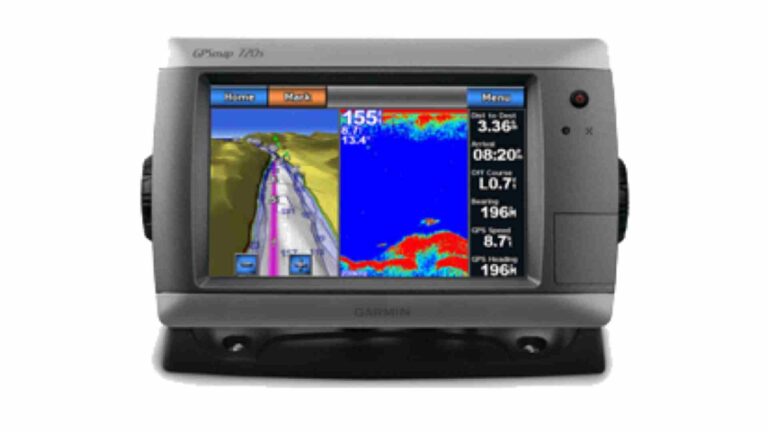How to Wax a Boat: Our Simple Step by Step Guide
Waxing a boat is a critical maintenance task that enhances its appearance and protects its hull from environmental damage. A well-waxed boat not only boasts a glossy finish but also resists dirt, grime, and UV degradation, extending the life of the gelcoat or paint. This guide provides a detailed, step-by-step approach to waxing your boat, including recommended tools, products, specifications, prices, and expert techniques to achieve professional results. Whether you’re a seasoned boater or a first-time DIYer, this article equips you with the knowledge to make your boat shine.
Why Waxing Your Boat Matters
Waxing forms a protective barrier that shields the boat’s surface from UV rays, saltwater, and oxidation, which can dull or damage the gelcoat. It also simplifies cleaning by preventing grime from adhering to the surface. For boats with painted hulls, waxing preserves color and prevents chalking. Regular waxing—typically every three to four months—maintains the hull’s integrity and aesthetic appeal, potentially increasing resale value.
Step-by-Step Guide to Waxing Your Boat
Waxing involves three main stages: cleaning, polishing (if needed), and waxing. Below, we outline each step with practical tips and product recommendations to streamline the process.
Step 1: Prepare and Clean the Boat
A clean surface is essential for effective waxing. Dirt, grease, or salt trapped in the gelcoat can compromise the wax’s adhesion, leading to uneven results.
Cleaning Process
- Remove the Boat from Water: Secure it on a trailer or flat surface to ensure stability.
- Initial Rinse: Spray the hull with a hose to loosen dirt, salt, and debris.
- Wash Thoroughly: Use a boat-specific soap to avoid stripping existing wax unnecessarily. Scrub with a soft, long-handled brush or sponge.
- Rinse and Dry: Rinse thoroughly and dry completely with microfiber towels or let air dry. Wax won’t adhere to wet surfaces.
Recommended Cleaning Products
| Product | Specifications | Price (USD) |
|---|---|---|
| TotalBoat Boat Soap | Biodegradable, 32 oz, 1 cap per gallon of water, safe for marina use | $15 |
| Star brite Sea Safe Boat Wash | 32 oz, biodegradable, non-streaking, safe for fiberglass and paint | $12 |
| Simple Green Marine All-Purpose Cleaner | 32 oz, eco-friendly, removes grease and wax, dilutable | $10 |
Tips:
- For stubborn stains, use TotalBoat White Knight Fiberglass Stain Remover ($18, 16 oz). Apply with a sponge, wait 10-15 minutes, scrub lightly, and rinse.
- For mildew, apply Outdoor Clorox ($8, 32 oz) or Star brite Mildew Stain Remover ($12, 22 oz).
- Avoid harsh detergents that may damage gelcoat unless dewaxing is required.
Dewaxing (Optional)
If old wax or heavy contamination is present, dewax before polishing or waxing:
- Gelcoat: Use TotalBoat Dewaxer & Surface Prep ($20, 32 oz) or Interlux 202 Fiberglass Solvent Wash ($25, 32 oz) with a two-rag method (wet rag to apply, dry rag to wipe).
- Painted Hulls: Check with the paint manufacturer. For 1-part paints, use a mild TSP and Simple Green mix (2-5% Simple Green) or a white Scotch-Brite pad.
Step 2: Polishing (Optional for Older Hulls)
Polishing removes oxidation and minor surface imperfections, restoring gloss before waxing. Skip this step if your boat is new or well-maintained with no visible oxidation.
Polishing Process
- Assess the Hull: Check for chalkiness, fading, or scratches. Test a small area with a mild compound first.
- Apply Compound: Use a liquid rubbing compound like TotalBoat TotalBuff ($25, 16 oz) or 3M Perfect-It Boat Compound ($30, 32 oz). Apply to a 2×2-foot section with a cotton rag.
- Buff with Machine: Use a variable-speed polisher (1000-1500 RPM) with a wool compounding pad. Start with slow speed and moderate pressure, then increase speed with light pressure.
- Wipe Residue: Clean with a water-dampened microfiber cloth.
Micro-Finishing (Optional)
For extra gloss, apply a finishing compound like 3M Finesse-It II ($35, 16 oz) with a wool polishing pad at low RPM. Wipe clean with a microfiber cloth.
Recommended Polishing Tools
| Tool | Specifications | Price (USD) |
|---|---|---|
| DeWalt DW849 Polisher | 7-inch, variable speed (600-3500 RPM), 8A motor, weight 6.7 lbs | $200 |
| Shurhold Dual Action Polisher | 6-inch, 900-2500 RPM, 5A motor, weight 4.5 lbs, reduces swirl marks | $150 |
| 3M Superbuff Polishing Pad | 8-inch wool, fits 5/8-inch shaft, high-density | $25 |
| Harbor Freight 7.5-inch Wool Pad | Budget-friendly, fits standard polishers | $10 |
Tips:
- Wear nitrile gloves ($10 for 100) and protective eyewear ($8) to avoid skin irritation and dust inhalation.
- Start with the mildest compound to preserve gelcoat thickness.
- For heavily oxidized hulls, wet sand with 800-grit paper ($10 for 10 sheets) before compounding, but use sparingly.
Step 3: Choose the Right Wax
Selecting the appropriate wax depends on your boat’s condition and maintenance goals. Here’s a comparison of common types:
| Wax Type | Best For | Pros | Cons | Price (USD) |
|---|---|---|---|---|
| Carnauba Wax (e.g., Collinite 885 Paste Wax) | New or well-maintained boats | High gloss, UV/salt protection | No abrasive, not for damaged hulls | $20 (16 oz) |
| Cleaner Wax (e.g., Meguiar’s M4965) | Light stains/oxidation | Cleans and protects, easy to apply | Limited for deep scratches | $18 (16 oz) |
| Polishing Wax (e.g., 3M Marine Ultra Performance) | UV/saltwater protection | Durable synthetic polymers, glossy | No grit, not for heavy damage | $25 (16 oz) |
| Restorer Wax (e.g., Star brite Premium Restorer Wax) | Old or damaged boats | Removes deep marks, restores shine | Coarser, may require more effort | $22 (16 oz) |
Step 4: Apply the Wax
Waxing seals the polished surface, providing protection and shine.
Waxing Process
- Work in Sections: Apply wax to a 3×3-foot area to prevent drying too quickly.
- Use an Applicator: Dab a quarter-sized amount of wax onto a foam applicator pad ($5 for 2) or microfiber cloth ($10 for 5).
- Apply in Circles: Rub in small, circular motions to fill gelcoat imperfections.
- Optional Machine Application: Use an electric waxing tool like the Shurhold Pro Rotary Polisher ($200) with a foam pad for faster application.
Tips:
- For Collinite 885, warm the can slightly in lukewarm water to ease application in cooler weather.
- Avoid applying too much wax; a 16 oz bottle should cover a 25-foot boat with about three-quarters used.
Step 5: Buff to a Shine
Buffing removes excess wax and enhances gloss.
Buffing Process
- Let Wax Haze: Allow wax to dry to a hazy film (5-10 minutes, depending on product).
- Buff with Microfiber: Use a clean, soft microfiber towel to buff in circular motions with light pressure.
- Repeat: Continue across the hull, changing towels if saturated to avoid streaking.
Tools:
- TotalBoat Microfiber Cleaning Towels: 16×16 inches, 300 GSM, lint-free. Price: $10 for 5.
- 3M Double-Sided Polishing Pad: 7-inch, foam, for machine buffing. Price: $20.
Step 6: Personal Safety
Protect yourself during the process:
- PPE: Wear nitrile gloves, protective eyewear, and a P-95 particulate respirator ($15 for 10) during polishing.
- Ventilation: Work in a well-ventilated area, avoiding direct sunlight to prevent products from drying too fast.
- Read Labels: Follow safety data sheets (SDS) for each product, especially for solvents and compounds.
Workflow Visualization

Frequently Asked Questions
How often should I wax my boat?
Wax every 3-4 months or at least twice yearly for optimal protection. Frequent waxing maintains gloss and reduces cleaning effort.
Can I overwax my boat?
Yes, excessive wax dulls the finish and wastes product. Use a quarter-sized amount per 3×3-foot section.
Should I wax the bottom of the boat?
No, waxing the bottom increases drag due to higher surface tension. Focus on the hull sides and deck to prevent UV damage and chalking.
Hand vs. Machine Waxing: Which is better?
Hand waxing is sufficient for small boats or minimal oxidation but labor-intensive. Machine waxing (e.g., DeWalt DW849) saves time on larger hulls and ensures even application.
Additional Tips for Success
- Environmental Considerations: Local conditions like sun exposure or acid rain may require more frequent waxing. Boats in harsh climates benefit from UV-resistant waxes like 3M Marine Ultra Performance.
- Quick Wax Jobs: For cruisers prioritizing protection over perfection, use a cleaner wax like Meguiar’s M4965 to combine cleaning and waxing in one step.
- Severely Damaged Hulls: For older boats, start with restorer wax or wet sanding, followed by compounding and finishing before waxing.
- Maintenance Between Waxing: Rinse with fresh water after each outing to remove salt and prevent buildup.
Recommended Kits for Convenience
| Kit | Contents | Price (USD) |
|---|---|---|
| TotalBoat Boat Polishing Kit | TotalBuff, TotalShine, Premium Boat Wax, applicator pads, microfiber towels | $60 |
| Jamestown Distributors 3M Polishing Kit | 3M Perfect-It Compound, Finesse-It II, Ultra Performance Wax, polisher, pads | $250 |
Final Thoughts
Waxing your boat is a straightforward yet impactful task that preserves its appearance and durability. By following this guide—cleaning thoroughly, choosing the right wax, applying in small sections, and buffing to a shine—you can achieve a professional finish. Invest in quality tools like the DeWalt DW849 polisher and TotalBoat products for efficiency. Start with a basic setup (soap, wax, microfiber towels) for under $50, and scale up with polishers or kits as needed. Regular waxing keeps your boat looking showroom-ready and protected for years.
Happy Boating!
Share How to Wax a Boat: Our Simple Step by Step Guide with your friends and leave a comment below with your thoughts.
Read 8 Waterproof Cameras to Help You Make Memories on Your Boat until we meet in the next article.






